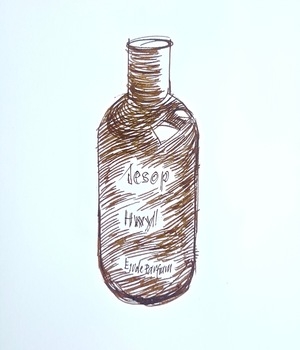Tagged With ‘frankincense’
Aesop
Hwyl
1 December, 2017
 Since 2004, when its first store opened in the corner of a Melbourne car-park, Aesop has developed into a global brand, thanks to its simple but sensual products, individually designed boutiques and large injections of private capital (most recently from Natura Cosméticos, the Brazilian version of Avon, which took full control of the brand in 2016).
Since 2004, when its first store opened in the corner of a Melbourne car-park, Aesop has developed into a global brand, thanks to its simple but sensual products, individually designed boutiques and large injections of private capital (most recently from Natura Cosméticos, the Brazilian version of Avon, which took full control of the brand in 2016).
Given that fragrance was always part of its products’ appeal (founder Dennis Paphitis got the original idea after adding essential oils to hair bleach to disguise the smell of ammonia), it’s no surprise that Aesop has flirted with perfume over the years. In 2005 it launched Marrakech, followed by Mystra in 2006, both of which were subsequently discontinued, though they still have their fans – perfumer Paul Schutze still has his roller-ball version of Marrakech, which he suspects was a commercial disaster not because of the fragrance, which he loves, but because ‘you use so little scent with the roller-ball that you never need to buy another one’.
In 2014 Aesop returned to perfume with Marrakech Intense, followed by Tacit in 2015 and now, in 2017, Hwyl. Though the name is Welsh, the scent is inspired by smoke floating through a Japanese forest of hiba cypress trees (the conifer Thujopsis dolabrata, also known as Hiba arborvitae), and that’s pretty much what you smell when you first put it on. The formula, which was devised by French perfumer Barnabé Fillion (who previously contributed to Marrakech Intense), also includes a good dose of thyme with hints of spice, moss and vetiver.
Hywl is my favourite of the three ‘new’ Aesop perfumes so far, though I think it’s rather overpriced at £83 for 50ml, especially as it doesn’t last for more than two or three hours on my skin (Aesop kindly sent me a bottle to review). It enters an increasingly crowded field of perfumes based around the smells of incense and smoke, most of them aimed at men, and while it’s nice of its kind, I can’t say that it’s especially original. But then perhaps Aesop knows that its customers aren’t looking for ground-breaking scents: just something that’s easy to wear and fairly on-trend, which Hwyl certainly is.
Comme des Garçons
Avignon
12 July, 2015
 Not everyone wants to smell like a Catholic cathedral in the middle of Midnight Mass, but I do. Maybe it’s because I’m not Catholic, but incense’s associations, for me, are less religious than architectural – and sensual too, since it’s one of those addictively overpowering fragrances that drive you slightly out of your mind (which of course was the original intention).
Not everyone wants to smell like a Catholic cathedral in the middle of Midnight Mass, but I do. Maybe it’s because I’m not Catholic, but incense’s associations, for me, are less religious than architectural – and sensual too, since it’s one of those addictively overpowering fragrances that drive you slightly out of your mind (which of course was the original intention).
The smell of incense is almost certainly among the oldest perfumes we have, with a history that stretches back as far as the word itself – the Latin ‘per fumum’ means ‘through smoke’. The word ‘incense’, meanwhile, derives from ‘incendere’, which also gives us ‘incendiary’ and ‘incinerator’.
Burning incense of one kind or another is common in many ancient cultures around the world, but the Catholic version began life in Africa and the Middle East. Lumps of incense have been found in the tombs of Ancient Egypt, and its main ingredients – frankincense and myrrh – still come from the Yemen, Oman and Somalia.
Recreating the burnt, resinous smell of incense in a perfume must be difficult, but in the last decade several perfumers have made the attempt, and Avignon, to my mind, is among the most convincing. It’s strong stuff, and not everyone will like it, but I love its almost narcotic intensity, with the pungent yet herbaceous smell of sun-burnt shrubs (especially cistus and santolina) on a rocky Greek mountainside. I don’t know if it’s simply the power of association, but I can even detect a hint of the slightly mouldy dampness that so many old churches smell of.
Launched in 2002, Avignon was created for Comme des Garçons by the brilliant French perfumer Bertrand Duchaufour, known for his long-standing association with L’Artisan Parfumeur. The name might seem a bit of a puzzle, until you remember that Avignon – now a beautiful if touristy walled town with tedious suburbs – was the seat of the papacy from 1309 to 1376, after the election of a French pope who refused to move to Rome. And ‘Avignon’ is surely a more evocative and intriguing name for a perfume than ‘Rome’. I, for one, am a willing convert.